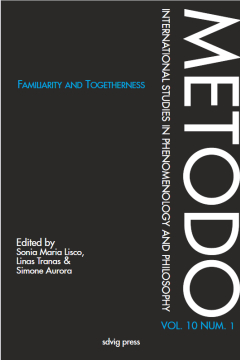Revue | Volume
Familiarity and togetherness
Volume 10 (1)
Résumé
The times of Covid lockdown and a further step in moving our social world online provide a great opportunity to think about and discuss the relationship between the senses of togetherness and familiarity. The sense of togetherness is a sense that it is us, we who live, act, or feel, as opposed to living, acting, or feeling personally, on one’s own. Phenomena of being, acting, and feeling together with others have attracted both early and contemporary phenomenologists (e.g., Scheler, Walther, Gurwitsch, Heidegger, Schütz, Zahavi, Szanto) and analytic philosophers (e.g., Searle, Bratman, Gilbert, Tuomela, Salmela). The sense of familiarity is a sense of having experienced something before, strictly connected to the fuency of a particular process and sometimes associated with a positive feeling of “warmth”. It has been the object of interest in phenomenology (Husserl, Schütz, Steinbock, Ratclife), analytic philosophy of perception (Wittgenstein, Baz), philosophical anthropology (Plessner) and contemporary investigations in psychology, sociology, and epistemology (Whittlesea & Williams, Fuchs, Teroni, Luhmann, Meylan).
Détails | Table des matières
pp.19-48
https://doi.org/10.19079/metodo.10.1.19pp.49-78
https://doi.org/10.19079/metodo.10.1.49a phenomenological exploration
pp.79-108
https://doi.org/10.19079/metodo.10.1.79on disorientation, homelessness, and we-identity in Alzheimer's dementia
pp.109-144
https://doi.org/10.19079/metodo.10.1.109from offline to online
pp.145-178
https://doi.org/10.19079/metodo.10.1.145familiarity and linguistic intimacy
pp.179-206
https://doi.org/10.19079/metodo.10.1.179Aron Gurwitsch's theory of organization
pp.239-256
https://doi.org/10.19079/metodo.10.1.239Détails de la publication
Revue: Metodo
Volume: 10
Numéro: 1
Année: 2022
DOI: 10.19079/metodo.10.1
Citation complète:
Lisco Sonia Maria, Tranas Linas, Aurora Simone (dir.), 2022, Familiarity and togetherness, Metodo 10 (1).










